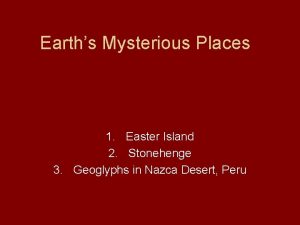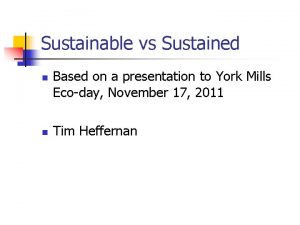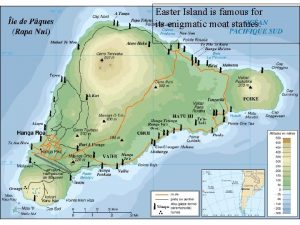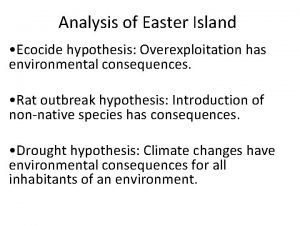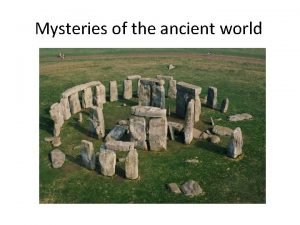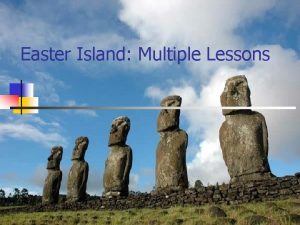Easter Island A recent analysis of the ecological







- Slides: 7

Easter Island: A recent analysis of the ecological impact of humans and rats on the ecosystem Rethinking the Fall of Easter Island New evidence points to an alternative explanation for a civilization's collapse By Dr. Terry Hunt http: //www. americanscientist. org/issues/pub/rethinking-the -fall-of-easter-island/1

Figure 1. British artist William Hodges traveled to Easter Island (or Rapa Nui, as the island’s inhabitants refer to it) in the 1770 s, inspiring this painting of several of the stone statues that have made this locale famous. The island continues to draw both tourists and scientists, in part because of the mystery surrounding the fate of its civilization. A popular account of Rapa Nui’s history casts the inhabitants as the perpetrators and victims of an ecological catastrophe that resulted from overexploiting the island’s resources. National Maritime Museum, London

UCLA professor and author Jared Diamond, in his 2005 best seller "Collapse, " devotes a chapter to the ominous demise of the statuebuilding cult. He attributed its demise to environmental ruin caused by deforestation, overpopulation and materialistic obsession. "By now the meaning of Easter Island for us should be chillingly obvious, " he concluded. "Easter Island is Earth writ small. " Source: Easter Island: a chilling parable for man's excess - The Denver Post http: //www. denverpost. com/travel/ci_5121948#ixzz 1 us 1 Zw. Ph. S

Figure 6. Prior studies of samples containing indications of human presence on the island (bits of charcoal, for example, suggesting human-set fires blazed nearby) yielded 45 published radiocarbon dates older than 750 years (top). Yet after the author and colleague Carl Lipo culled these data using accepted reliability criteria, only nine dates remained (shaded portions of bars). The majority of the accepted results had radiocarbon ages close to 900 years (approximately 1200 A. D. ). The single sample giving an earlier radiocarbon age showed large measurement uncertainties, corresponding to a broad range of possible dates between 657 A. D. and 1180 A. D. , so it, too, is compatible with the notion that people arrived on the island around 1200 A. D. Studies of deforestation on Rapa Nui have found signs of human activity beginning about 800 years ago (bottom). One explanation for the lack of evidence of human activity before this point is that the initial population was small and had little environmental impact. But it may be that humans simply did not arrive until about 800 years ago. Stephanie Freese and Amos Esty

Figure 7. For thousands of years, large stands of palm trees covered much of the island. The closely related Jubaea chilensis (left) still survives in Chile and elsewhere, but the trees disappeared from Rapa Nui in the centuries after people arrived. The landscape remains largely denuded today, as seen in this view of the area around Ahu Tongariki (right). Although people were probably responsible for some portion of the deforestation, the principal cause was a swelling population of Polynesian rats (bottom), which eat palm nuts and in so doing make it difficult for these trees to regenerate. Photograph at left by Humberto Olea. Photograph at right courtesy of Terry L. Hunt. Photograph at bottom by Brian Enting/Photo Researchers, Inc.


So what accounts for the population collapse on Easter Island? “Newly introduced diseases, conflict with European invaders and enslavement followed over the next century and a half, and these were the chief causes of the collapse. In the early 1860 s, more than a thousand Rapanui were taken from the island as slaves, and by the late 1870 s the number of native islanders numbered only around 100”


